---------------------------------------------------------
They say that ducks are the “new chickens” – backyard farmers all over the country are beginning to enjoy the pleasure of keeping ducks. Our ducks are all different breeds because I enjoy variety and I like being able to tell them apart….and because there are so many great breeds I couldn’t choose just one!
Before I kept ducks, like most people, when I pictured a duck the first thing that came to my mind was a large white duck with an orange bill – like the one that tries to sell me insurance in case I get hurt. The next duck I thought of was the classic green-headed Mallard that graces nearly every pond in the Northern Hemisphere.
That was pretty much the extent of my duck breed knowledge. The large, white Pekin duck is the most popular domestic duck breed around. The Mallard is thought to be the breed that nearly every domestic breed of duck is derived from so you will recognize their traits in many domestic breeds. While Pekins and Mallards are awesome, there are tons of other amazing duck breeds available, many of whom are on the endangered list, and would love to find a home in your yard.
If you are thinking about adding some ducks to your life, check out some of these popular duck breeds!
Let’s start at the beginning….
Mallard
Native to most countries in the Northern Hemisphere, Mallards are thought to be the “father” of all domesticated ducks except for Muscovy. Mallards are small, making them capable of flight. They don’t tolerate confinement very well, so if you keep Mallards you risk them flying away and not returning unless you can provide a nice, large, covered enclosure. Mallards lay a beautiful greenish egg, and are highly energetic and talkative. They have one of the lowest egg-laying rates of the domesticated breeds, laying just a couple of eggs per week.
Wild Mallards are widely hunted and removing birds from the wild to raise in captivity is a big no-no with US Fish & Wildlife. Raising wild ducks is actually illegal in many states. When keeping Mallards, you need to mark them to show you have not “duck-napped” them. Metzer Farm, one of the biggest duck breeders in the country, removes the back toe as soon as they hatch to permanently mark that duck as domestically bred.
Male ducks have a glossy green head with a white ring around their neck and grey on their wings and belly, while the females are mainly brown-speckled with a blue band on their wing called speculum feathers. Most people that keep Mallards do so for purely decorative reasons, or for training hunting dogs.

Pekin
Beautiful all white feathers on a heavy, large size bird. Pekins are popular because they are dual purpose. Hens lay a large number of white eggs so they are great to keep as layers. Their fast growth rate & light-colored skin also make them excellent to raise as meat birds. Around 90% of the duck meat produced in America comes from Pekins. Pekins are a heavy-weight bird with a calm, friendly, curious disposition, lots of eggs and meat if you want it – Pekins are a great all-around choice.
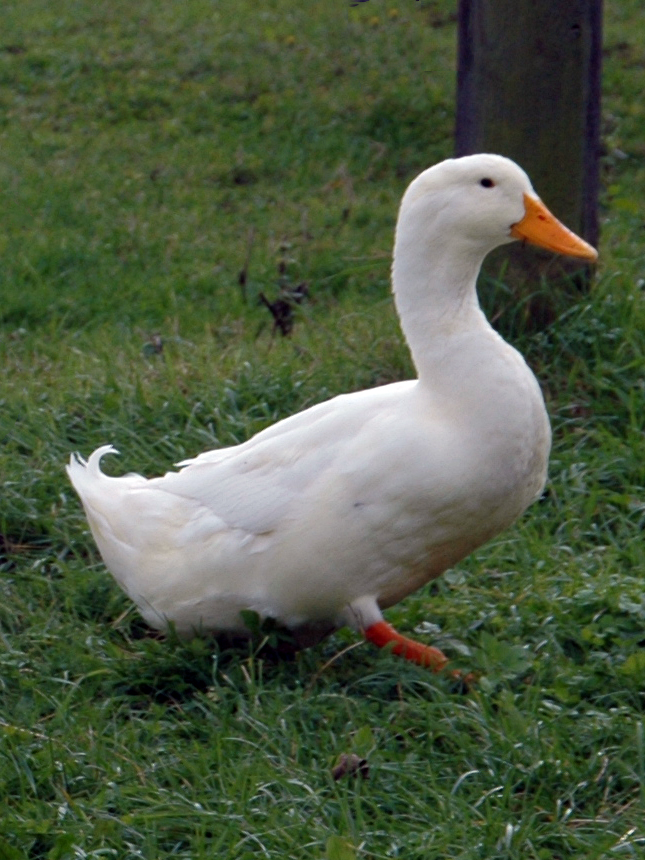
Muscovy
A really interesting bird native to the southern hemisphere. Commonly referred to as a duck, Muscovies in fact are a different species than the Mallard duck relatives. Their meat is leaner than duck meat with a plump breast like a turkey. They nest like ducks do, but also like to roost at night like chickens. Muscovies are shaped like a duck and are able to mate with a duck, but the offspring will be sterile and are referred to as mule ducks. They do not quack; the male has a low breathy call, and the hen a quiet coo which makes them perfect for backyard farmers with close neighbors. The male has large red fleshy growths around his eyes called caruncles, the females also have caruncles but to a lesser extent. Most domesticated Muscovys are dark brown or black & white.
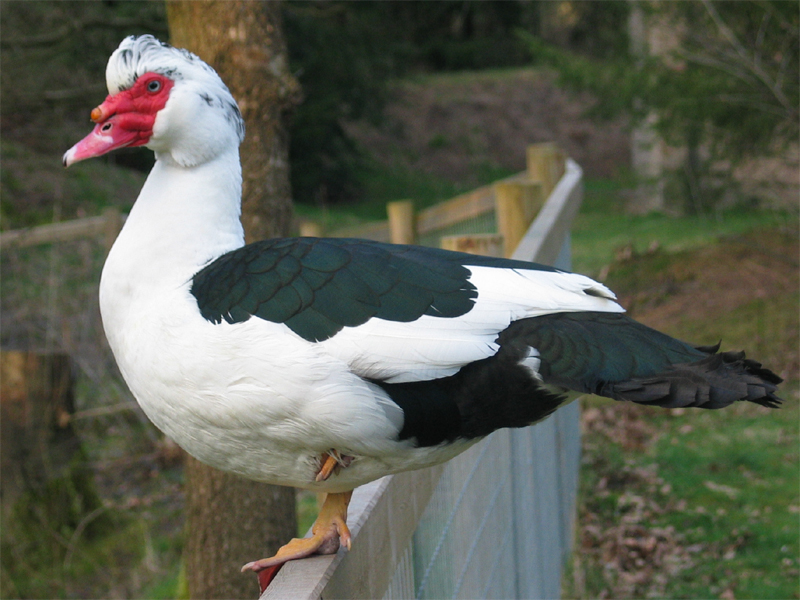
Cayuga
The only duck breed developed in the United States, Cayugas originated near Cayuga Lake in New York. They are a medium-heavy breed that is slow growing. Cayugas have gorgeous black iridescent feathers that can look green when light shines on them, black bills and black feet (laying females and older birds sometimes have a bit of orange in their feet). They are usually raised for exhibition or eggs and their calm disposition makes them a great choice for backyard flocks. Hens generally lay 3-4 eggs per week and have a charcoal or black-colored shell early in the laying season. Mid to late season eggs & eggs from older birds are usually very light gray. Cayugas are listed as threatened status by the Livestock Conservatory.
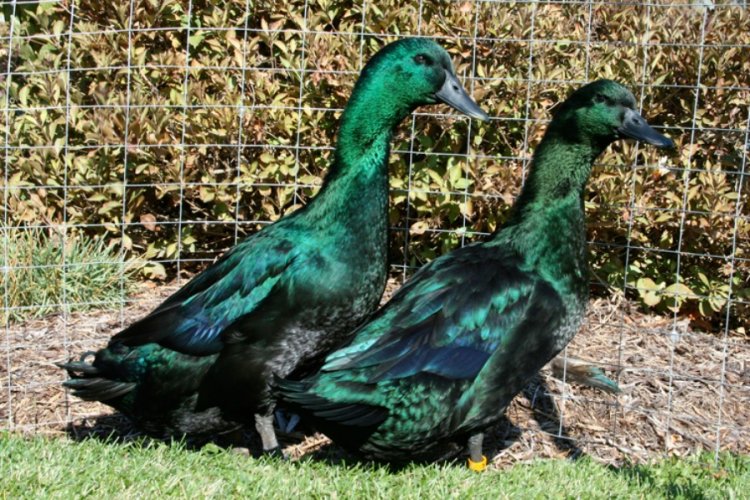
Buff Orpington
Buffs originated in the Orpington area of Kent, England in the early 1900s (by William Cook, the same man that gave us the popular Buff Orpington chicken). A medium size duck, originally bred as an egg laying breed, you can expect an average of 3-5 white to light brown eggs per week. They have lovely fawn buff feathers with a brownish orange bill and a sweet personality. Buff Orpingtons are listed as threatened.
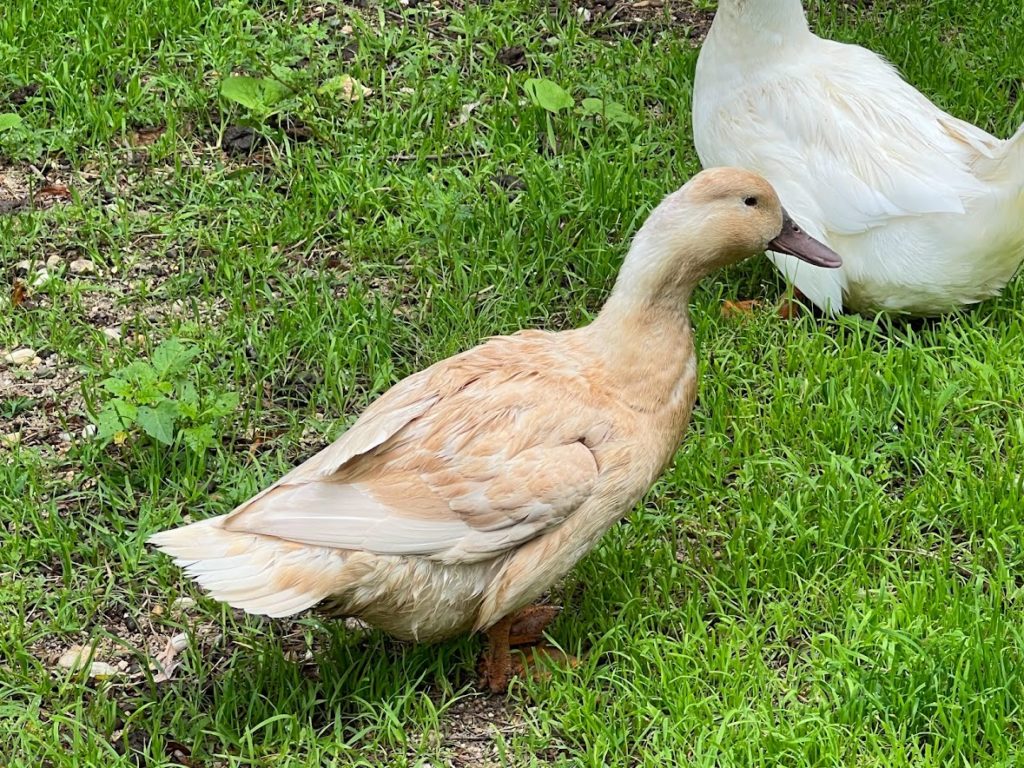
Rouen
A wonderful multi-purpose duck. A large bird that will lay 3-5 bluish tinted eggs per week. Rouens are a popular alternative to Mallards because they are nearly identical, but much larger so are too heavy to fly away. The males have a glossy green head with a white neck ring and a grey body. The females are brown laced with blue speculum feathers. Their calm disposition also makes them wonderful pets or additions to your backyard farm.
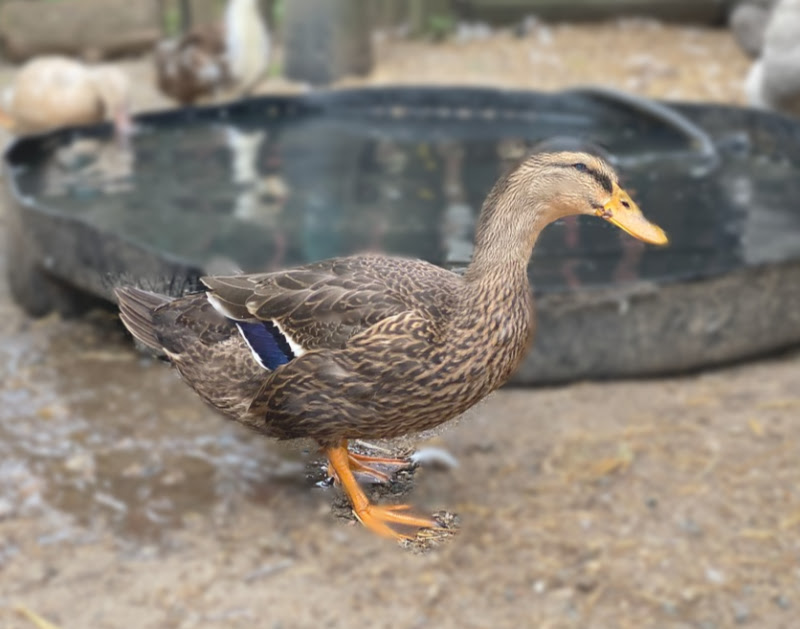
Crested
Usually raised for exhibition purposes or as pets, crested ducks are large white ducks with a ball of feathers, or crest, on their heads. They are slow growing so they are not a popular meat choice, but do lay fairly well (2-4 eggs per week). Bantam crested ducks & crested ducks in colors other than white have also been gaining popularity in recent years. The crest is actually a genetic mutation causing a deformity of the skull, so breeding them sometimes causes some controversy among animal rights groups. Breeding can be tricky – breeding a crested duck with another crested duck can be fatal for the offspring. To breed them you need to breed a crested to a non-crested duck, 1/4 of fertile eggs will never hatch, 1/4 will be crest-less, and only half of the ducklings will develop a crest.
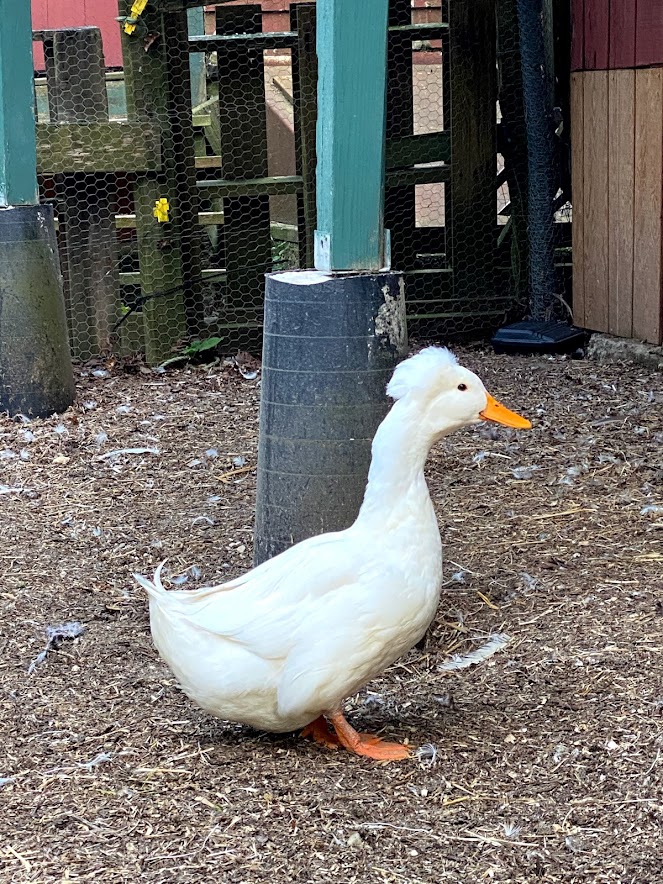
Saxony
A great dual purpose breed, the Saxony is a heavy, fast growing duck that also lays a large amount of white or light blue eggs. Originally bred in the 1930s in Germany, nearly all the breeding stock was lost in World War II. Saxony are listed as critically endangered by the Livestock Conservancy. Males display the typical Mallard pattern, but their colors are unique from any other breed. The male’s head & wing markings are blue-gray, with a chestnut breast and cream belly. The females are a golden buff with cream/white facial stripes, neck ring & belly. They are calm, curious & excellent natural foragers.
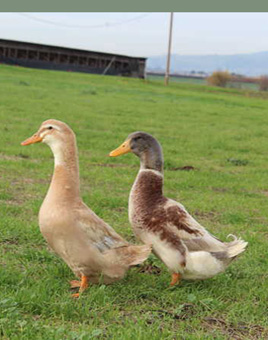
Call Ducks
Their petite size, calm temperament & playful attitude make Call ducks very popular as pets or for exhibition. Adorably small; full-grown adults tip the scale at under 1.5 pounds. Call ducks were originally bred by duck hunters. The Call duck’s quack attracts wild ducks to the hunting area. For hunting, Call ducks have been nearly entirely replaced by artificial duck calls & decoys, so now these ducks are mainly raised as pets. As expected, they have a very loud call and are very talkative so they might not be the best choice if you have close neighbors. In recent years, multiple colors of Call ducks are becoming available. The two most popular are white (an all white duck) and grey (looks like a mini Mallard)
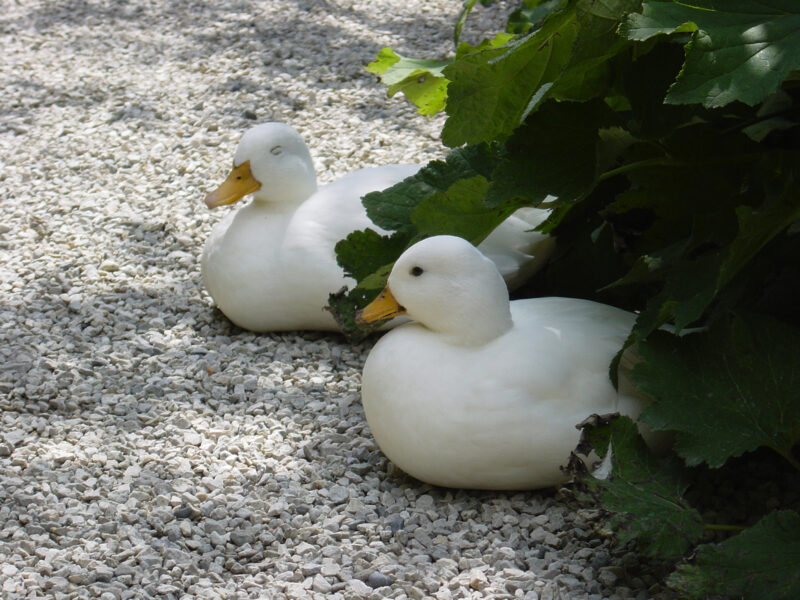
Swedish
A medium to large size dual purpose bird, they are slow growing and excellent natural foragers. You can expect 3-4 eggs per week with varying shades of white, blue and green. They have calm temperaments and will make a great addition to your backyard farm! Black Swedish are mostly black with a white patch on their neck & chest. Blue Swedish are a slate blueish gray with a white patch on their neck & chest. The color blue will not breed true however. If you breed a blue male to a blue female, half will be true Blue Swedish, a quarter will be Black Swedish and the other quarter will be Splash or Silver (either speckled white & grey or a silvery gray)

Runner
These ducks do not have the typical “duck” body shape – they are lightweight and stand upright like penguins, they always remind me of bowling pins! Their upright stance allows them to run fast rather than slowly waddle like other domesticated ducks. They were originally bred in China to help rice farmers control insects in the rice paddies. They are excellent egg layers & natural foragers, laying 4-5 eggs per week that usually have a blueish tint to them. Runner ducks tend to be nervous and can stampede when startled.

Khaki Campbell
Campbells are usually raised for their superior egg production, they can lay 5-6 cream colored eggs per week! Their excellent egg laying abilities make Campbells one of the most popular choices for backyard keepers. They are a medium weight bird, their smaller size means that some birds are able to fly for limited distances. Developed in the late 1800s by Adele Campbell, she crossed a Runner with a Rouen to create a duck that would lay well like a Runner but will be bigger to use as a meat bird. Campbells are a warm khaki color with the drakes having a darker bronze colored tail and dark head.
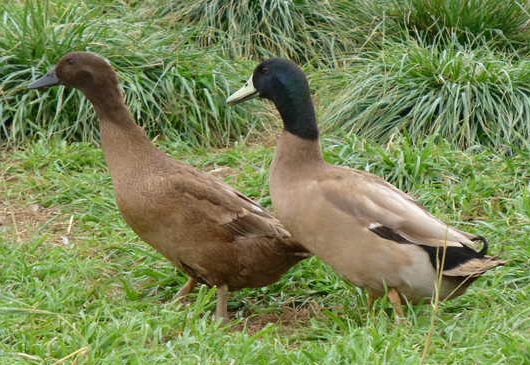
Magpie
A lightweight bird, they are excellent egg layers – laying 4-5 colorful eggs per week. Magpie’s eggs can vary from white, cream, blue, and green. Their feathers are usually black & white, but also can be found in blue & white with an orange bill. Generally a quiet & calm breed, they make excellent additions to suburban farms.
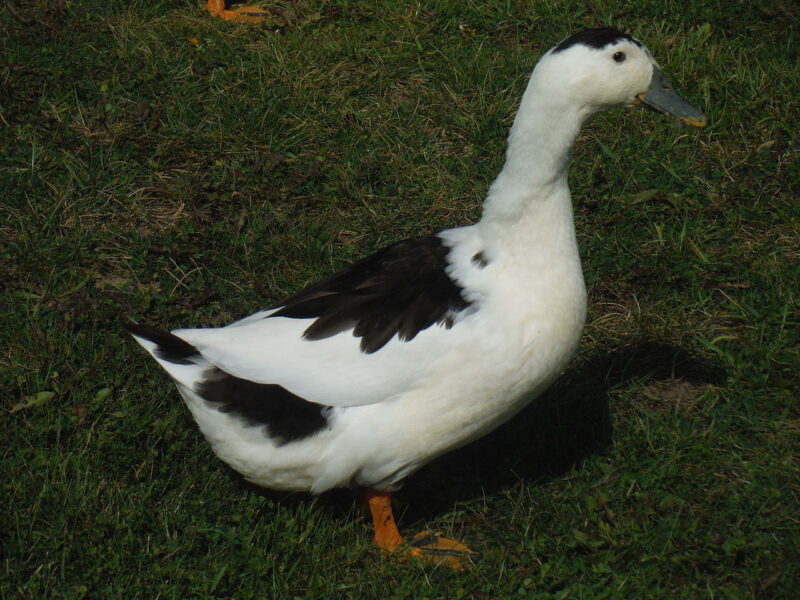
Silver Appleyard
This is a BIG duck! In coloring, they are similar to Mallards with the male featuring a green head, brown mottled chest with some feather lacing, and cream colored underbody. The females have a silver/white underbelly with brown lacing and iridescent speculum wing feathers. Silver Appleyards are calm & friendly and very reliable egg layers.
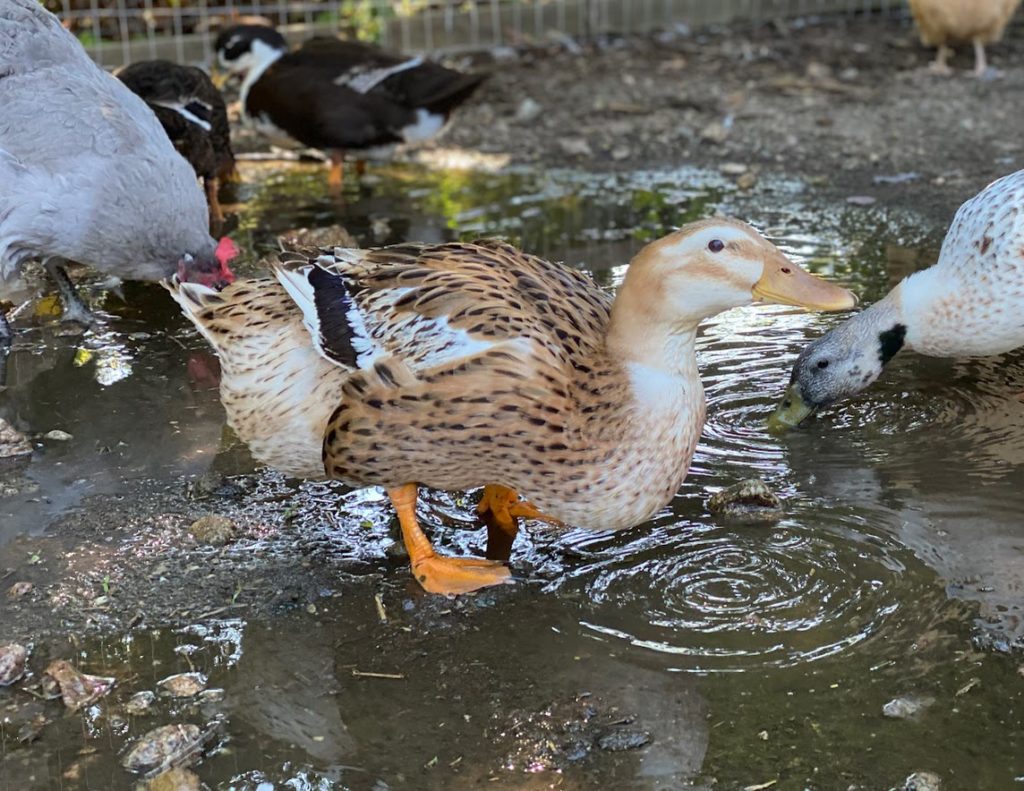
Welsh Harlequin
A colorful all purpose duck, they are raised for exhibition, eggs & meat. Welsh Harlequins are a medium weight duck and are also prolific layers, laying 4-6 eggs per week that vary in color from white to light blue tint. They are calm and great natural foragers. The females have a black bill with white & brown feathers and a blue speculum feather ban. The males have an orange bill and closely resemble a male Mallard with a green head, white neck ring and brown body. Welsh Harlequins are one of the few duck breed that have a natural sex-linked characteristic. At just a few days old, 90% of them can be sexed by bill color. Welsh Harlequins are listed as critically endangered.
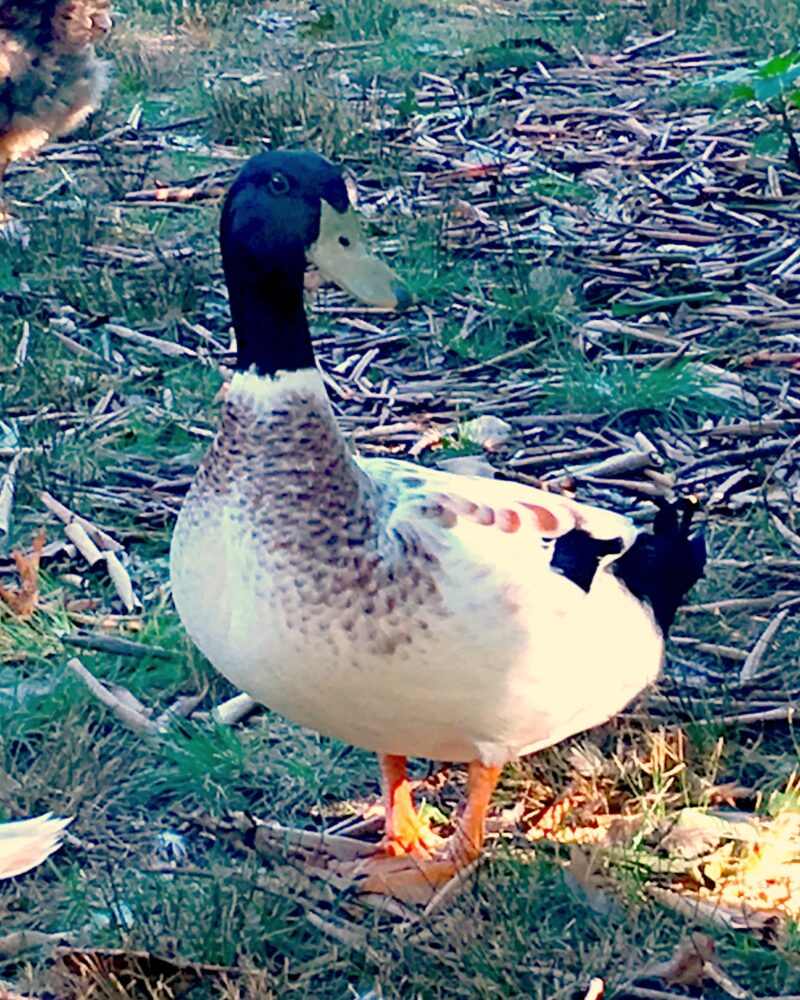
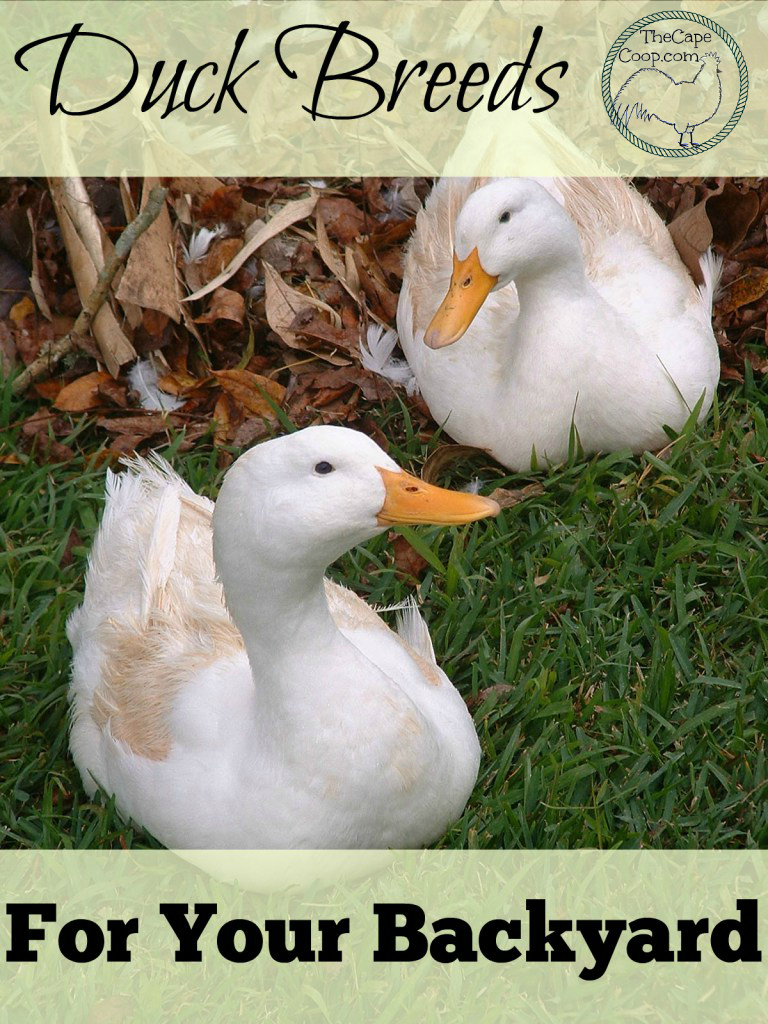
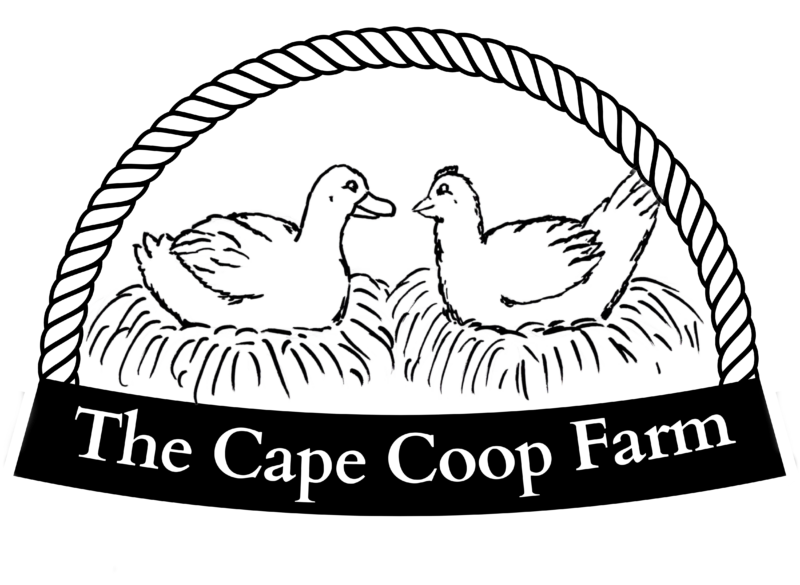
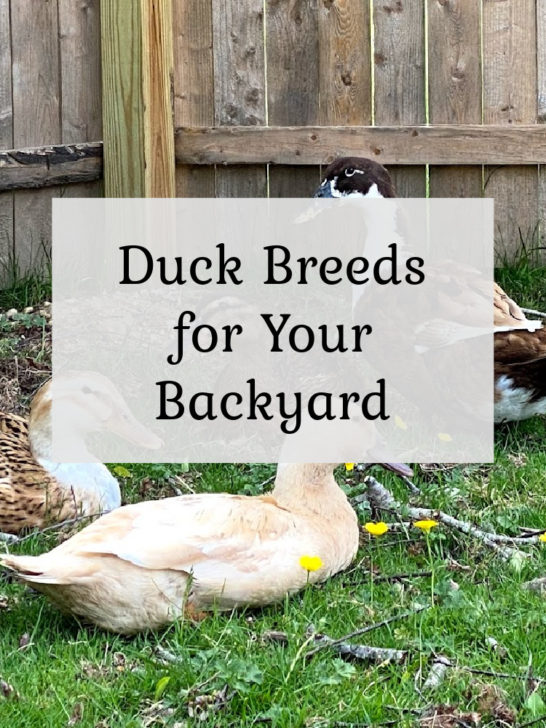

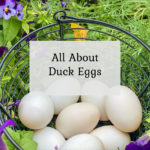
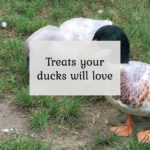
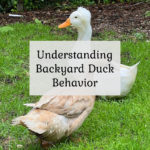
Xenia
Wednesday 27th of March 2024
You would not believe me, but cayugas are not the only duck breed that originated in the US. The GOLDEN CASCADE also originated in the United States and is a great backyard egg-laying duck for beginners because it is a great forager, layer, pet, broody duck and is very EASY to raise. Golden cascades are, over all, great ducks. But, just like every breed of poultry, they have a big downside: they are big ducks, but there meat is on of the worst meats in the duck kingdom.
This is a picture of a female golden cascade: https://en.wikipedia.org/wiki/File:Golden_Cascade_female.JPG
For more information on wikipedia: https://en.wikipedia.org/wiki/Golden_Cascade#
For everyone who want's to buy ducklings from this endangered breed in the United States of America: https://www.hoovershatchery.com/goldencascade.html
Liz
Wednesday 3rd of April 2024
Aww aren't they cute! I haven't heard of this breed before, they look like a great duck!
Michael
Wednesday 17th of August 2022
Hi, I came across this site and article. I Live in a neigherhood outside of Houston and we have a rention pond surrounded by trees, brush. I have noticed 6 ducks just showed up the other day and are sticking around. At first they were scared of me but once they saw I threw out floating fish pellets they follow me for food. 2 of them look like Muscovey males but I think the others are cross bred. Any way I could email a picture to see if you can identify? Will they just survive with no shelter, and will they lay eggs somewhere around in the taller grass/ or up in the brush 40-50 ft away?
Liz
Saturday 27th of August 2022
Hi Michael, I am sorry I somehow missed this message earlier. But yes you can email me at liz@thecapecoop.com with a photo if you'd like. It's hard to say how well they will fair in the wild. If these are dumped domesticated birds their chances are not great because most domesticated breeds can't fly which will leave them exposed to predators. Muscoveys are really the only domesticated breed that can fly. Muscoveys are not only domesticated though, they can be found in the wild, and Texas in particular has a healthy Muscovey population. So if they are all Muscovey they could just be wild ducks that decided to settle by the pond. Land bound domesticated ducks really need to live in a farm setting where they have secure shelter at night. They will be laying their eggs somewhere nearby, more likely in the brush as it would provide better cover.
Mike
Sunday 10th of July 2022
My wife and I are retired and we moved into our newly built dream house. We had a pond dug in our backyard. it's 40' X 30' with a medium size waterfall. We also have dogs, Three french bulldogs and one Labrador. They are very social and well behaved . They are restricted to a large fenced park when outside. We have been thinking of getting a couple of pet ducks. They would have the pond to play in and also an acre of bush and garden to roam in. We hope to have ducks that are friendly with us and get along with the dogs. Which breed would you recommend? and where can we purchase them. We are in Ottawa, Ont, Canada. We would much appreciate your thoughts on this to help us.
Liz
Wednesday 13th of July 2022
That sounds like a duck paradise! I would definitely recommend you start with ducklings for the friendliest adult ducks. They will bond with you and see you as their caretakers so even as adults will trust you and be friendly. I have two dogs who are around our birds often. Training the dogs can be more challenging than making the ducks friendly. Just go slow, hang out in the "duck area" with your dogs on leashes often and eventually the dogs will recognize that the birds are friends and they should not chase them. That said some dogs (like labs) have deep instincts for bird hunting and it's possible they will never be able to be around the birds unleashed. Every dog is different. Ducklings are easy to find in the late winter/spring. Check at your local Tractor Supply or feed store. If that doesn't work you can order ducklings and have them shipped right to your door. Most of my ducks have come from online hatcheries so I could ensure they would be female and so I could get a wider selection of breeds. I apologize I don't have any personal experience with Canadian hatcheries but if you do a google search for "duck hatcheries in Canada" I'm sure you will find several! Good luck!
Millie
Tuesday 29th of June 2021
We recently got 2 Peking ducks (1 is a drake and 1 female) along with 3 Rouen (all 3 are female) Will the Pekin cross breed with the Rouen? One recent problem, all 4 pick on the female Pekin. I had to separate her, I thought they might kill her. They pull her feathers, even a chicken was pecking at her. What’s going on,? Any recommendations? Thanks!
Liz
Wednesday 30th of June 2021
Yes the Pekin will definitely breed with the Rouens, drakes are not picky about breed. It's hard to say why but sometimes birds just don't like one bird. Hopefully that is not the case and eventually they will all get along. My guess is that they are all just trying to establish a pecking order to see who is in charge. Sounds like your female Pekin is at the bottom of the pecking order.
sofia
Tuesday 18th of May 2021
hello Liz! my parents don't want to get a duck got any ideas to convince them? I already told them I was responsible enough and I took care of dogs and we have a dog and I take care of it but that doesn't seem to do it got any ideas?
Liz
Tuesday 18th of May 2021
Keep in mind that you will want to get at least two ducks so they can keep each other company while you are at work or school. Maybe if you draw up some plans for their living area and show them the research you’ve done on their care? My kids have talked me into many pets over the years lol - ultimately what would sway me would be when they showed me they took the time to see how to properly care for it and wrote out a chore schedule for keeping the enclosure clean. There was definitely a PowerPoint presentation once 😂 Saying you want a duck and that they are cute is one thing, to show you are committed and understand what needs to happen to keep them healthy is better. I have lots of duck articles if you look in the menu under “backyard ducks” about their general care. One you might want to check out is “Duck Pros and Cons” https://thecapecoop.com/should-you-get-ducks/